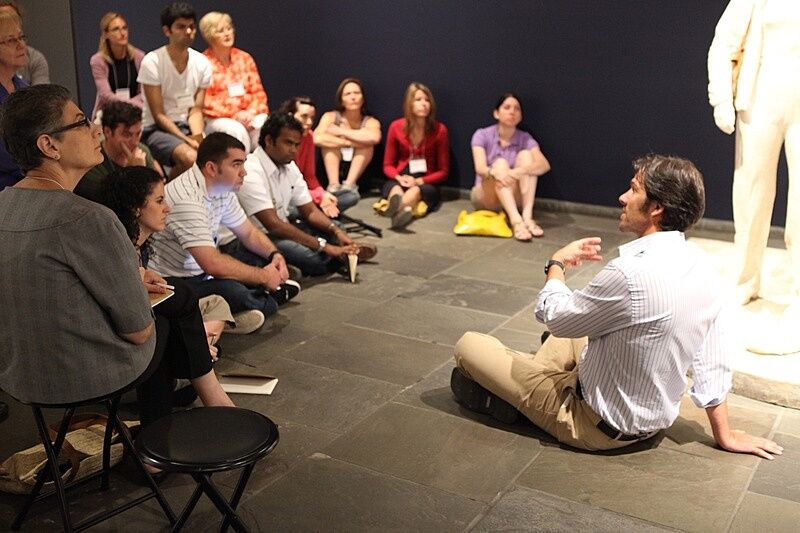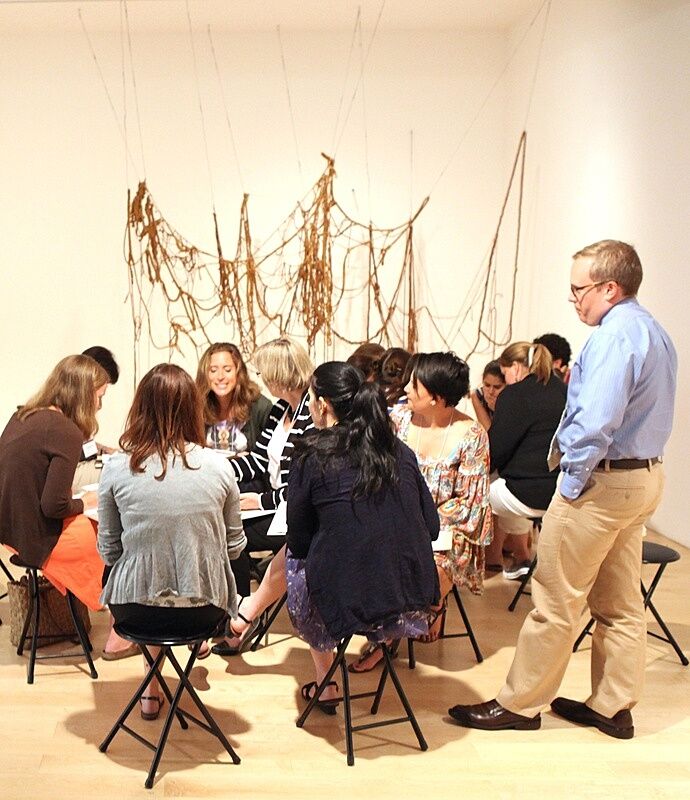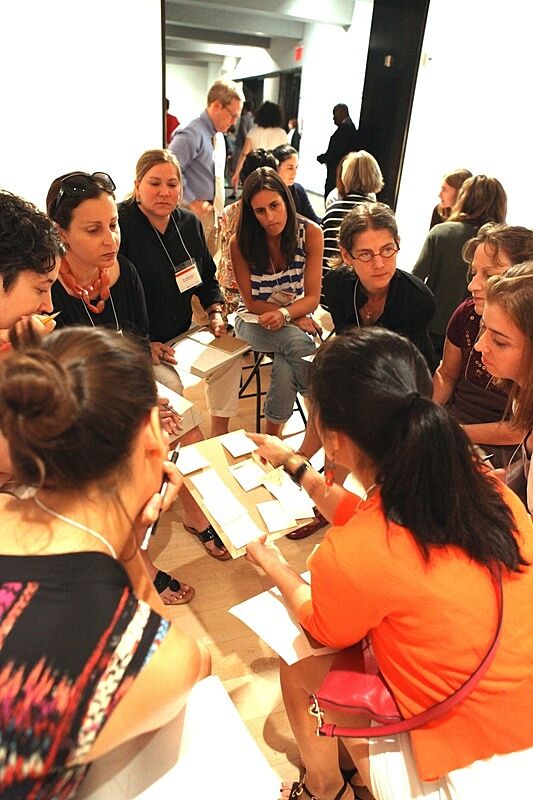Connecting Collections: Integrating Modern and Contemporary Art into the Classroom
Aug 17, 2011
During the week of July 11-15, thirty-nine teachers from around the world gathered together to collaborate and learn about integrating art into the classroom. Since 2003, the Whitney has been part of Connecting Collections, a week-long summer institute in collaboration with the Metropolitan Museum of Art, the Museum of Modern Art, and the Solomon R. Guggenheim Museum. The goals of this professional development seminar are to deepen teachers’ understanding of contemporary and modern art, introduce object- and inquiry-based teaching strategies, and develop engaging approaches for using works of art in the classroom. The 3rd to 12th grade teachers spent a day at each of the four museums where they participated in guided gallery talks, discussions, and hands-on activities. They also attended seminars in which participants worked together in small groups to create a lesson plan for their classrooms.
At the Whitney, Museum educators led gallery discussions about selecting and incorporating themes into classroom teaching. The discussions focused on the themes used for school tours, including “Artist as Observer” and “Artist as Experimenter.” Whitney educators encouraged discussion and introduced activities to engage the participants. One activity was based on Eva Hesse’s sculpture, No Title (1970), which was discussed in relation to the theme, “Artist as Experimenter.” Teachers wrote down the word they initially associated with the work then joined together to group the related words, discuss their impressions of the sculpture, and explore how Hesse’s experimentation with materials influenced their impressions.
The week as a whole proved inspirational for all. During Friday afternoon’s wrap-up session with the educator and keynote speaker, Laurel Schmidt, teachers shared glowing reviews of the program. One teacher said that Connecting Collections provides “the whole package.” While the teachers were happy with the comprehensive nature of the program, museum staff was awed by the group of dedicated, creative, and engaged participants. The group discussed future projects such as creating a Connecting Collections Facebook page and collaborating on classroom blogs. Overall, the summer institute created a special opportunity for participants to connect and interact with local, national, and international colleagues in addition to providing unique access to four of the world’s major art museums.
By Anna DuBose, School and Family Programs Intern



